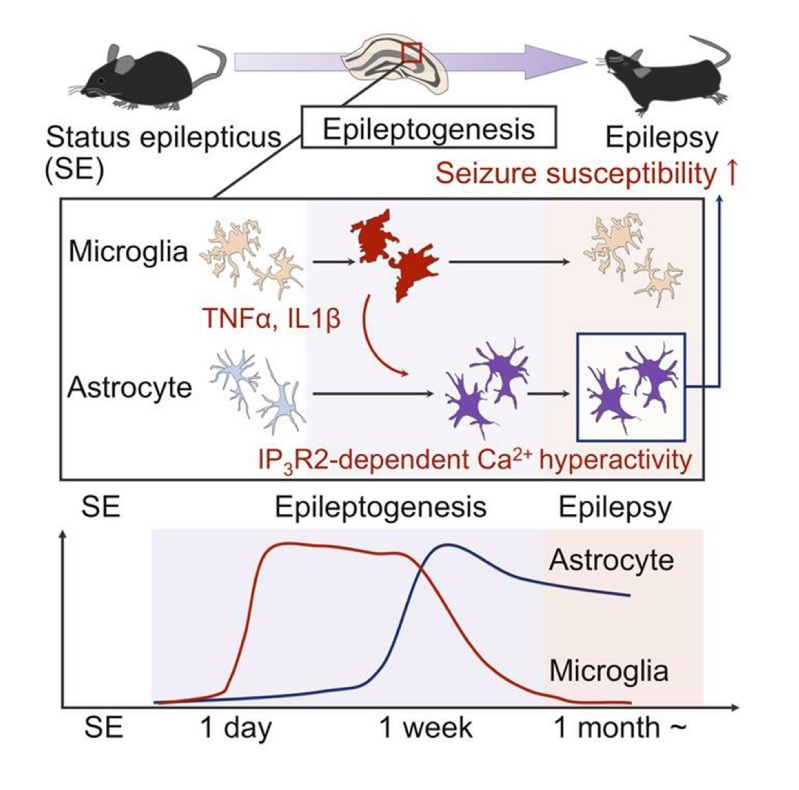SIAIS Prof. Katsuhiko Mikoshiba with research team led by Prof. Schuichi Koizumi of Yamanashi Univ. unraveled the mechanism of sequential activation of glial cells (microglia and then astrocyte) constitutes a cause of epileptogenesis, where IP3 Receptor type 2 (IP3R2) in astrocyte plays a major role in the increased susceptibility to seizures published in J. Clinical Investigations in May 21st 2021.
Epileptogenesis is a common sequel of brain insults such as brain injury. Status epilepticus is a condition which leads to abnormally, prolonged repetitive seizures that result in brain damage causing serious and potentially life threatening.
The present research has revealed the precise mechanism how activated glial cells, microglia and astrocyte collaboratively contribute to epileptogenesis.
Poinflammatory cytokines of microglia such as TNF and IL-1β were increased prior to astrocytic activation, suggesting the importance of microglial activation as an initial process of epileptogenesis.
IP3R was discovered and cloned in Mikoshiba Lab in 1989 (Nature 342 32-38) and each type of IP3R knock out mice was subsequently generated in his lab in 1996 (Nature 379 168-171) and 2005 (Science 309:2232-2234).
Reactive astrocytes exhibit Ca2+ hyperactivity where IP3R2 is the main player in astrocytes, which is essential for epileptogenesis. The IP3R2 knock out mice exhibited rescue of the increased seizure susceptibility.
Microglia inhibition with minocycline reduced astrocytic Ca2+ hyperactivity and depletion of microglia significantly blocked the activation of astrocytes and decreased the seizure threshold.
Inhibition of microglial activation reduced astrogliosis, aberrant astrocytic Ca2+ signaling, and seizure susceptibility, however, microglia depletion with at late phase did not reduce astrogliosis.
Therefore, it is demonstrated that the sequential activation of glial cells, i.e., the initial activation of microglia followed by the later activation of astrocyte is a cause of epileptogenesis,
The therapeutic target to prevent epilepsy after status epilepticus should be applied to microglia at early phase, and at late phase to astrocytes focusing on the regulation of IP3R2 dependent Ca2+ signaling.
Published in: JCI Insight. 2021;6(9):e135391. https://doi.org/10.1172/jci.insight.135391

JCI Insight. 2021;6(9):e135391. https://doi.org/10.1172/jci.insight.135391
Reactive astrocyte-driven epileptogenesis is induced by microglia initially activated following status epilepticus



